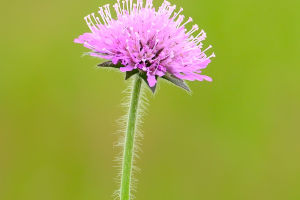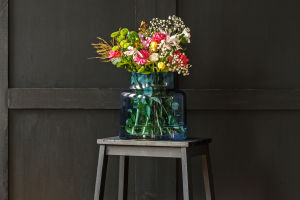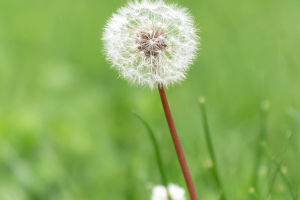Tulips, with their simple yet elegant beauty, have been a favorite in floral arrangements for centuries.
Originating from Central Asia and later becoming synonymous with the Netherlands, tulips bring a sense of freshness, color, and versatility to any floral display.
Their unique shape, wide variety of colors, and strong stems make them a go-to choice for both casual and formal arrangements. Let’s explore the various ways tulips are used in floral arrangements, providing tips and inspiration for anyone looking to incorporate this iconic flower into their designs.
Versatility of Tulips in Arrangements
Tulips are incredibly versatile and can be used in different styles of floral arrangements, from minimalist designs to more elaborate displays. Their clean lines and vibrant colors make them suitable for both modern and traditional arrangements. Tulips can stand alone in a vase or be combined with other flowers to create a harmonious mix. The adaptability of tulips also extends to the seasons, as they are available in an array of colors that can suit both spring and winter designs.
1. Monochromatic Arrangements
One popular way to use tulips in floral arrangements is through monochromatic designs. Tulips come in a wide range of colors, including shades of red, yellow, pink, purple, and white.
A single-color arrangement of tulips can make a bold and sophisticated statement. For example, a bouquet of deep red tulips can evoke passion and elegance, while white tulips bring a serene and calming effect. A monochromatic tulip arrangement can be used as a centerpiece on a dining table or as a decorative element in a minimalist room, providing a pop of color without overwhelming the space.
2. Mixed Floral Bouquets
While tulips are stunning on their own, they also pair beautifully with other flowers. Tulips can be mixed with roses, lilies, hydrangeas, or peonies to create lush, textured arrangements.
Their soft petals complement the shapes of these other blooms, adding variety to the bouquet’s overall form. For example, pairing pink tulips with white roses and green hydrangeas can create a balanced, romantic arrangement perfect for weddings or special events. The contrast between the tulips' sleek stems and the fuller, rounder flowers creates visual interest while maintaining elegance.
3. Seasonal Themes
Tulips are often associated with spring, making them a perfect choice for seasonal arrangements. Combining tulips with other spring flowers like daffodils, hyacinths, and cherry blossoms can create a vibrant and cheerful arrangement. These arrangements work well as decorations for spring events such as garden parties, or spring weddings. For a winter twist, white or pale pink tulips can be combined with evergreen branches, pinecones, and berries to evoke a frosty, wintry feel.
4. Minimalist Arrangements
Tulips are ideal for minimalist floral arrangements due to their clean lines and sleek appearance. A single tulip in a clear glass vase can be an elegant, understated decoration for a modern space. Arranging a few tulips in a simple vessel, such as a ceramic bowl or metallic container, can create a chic and contemporary display. The key to minimalist tulip arrangements is to focus on the simplicity of the flower itself, allowing its beauty to shine through without the distraction of too many other elements.
Tips for Arranging Tulips
To create the best tulip floral arrangement, there are some important tips to keep in mind.
1. Choose the Right Vase
Tulips have relatively tall, straight stems, so choosing a vase that supports their height is important. A medium to tall vase works best, but be careful not to use a vase that is too tall, as tulips have a tendency to droop. Glass vases are popular for tulips because they showcase the beauty of the flower from all angles, including the stems and water. For a rustic look, tulips can be placed in mason jars or pitchers.
2. Cut the Stems at an Angle
Like many cut flowers, tulips last longer if their stems are cut at an angle. This increases the surface area for water absorption, keeping the tulips fresh for a longer period. It’s also a good idea to trim the stems every few days and refresh the water in the vase.
3. Watch Them Grow
Unlike other cut flowers, tulips continue to grow even after being cut. They can grow up to an inch or more in water. Be sure to account for this growth when creating your arrangement, as tulips may change position in the vase over time. Their growth and movement add a dynamic element to the arrangement, making tulips a living, evolving part of the display.
4. Combine with Foliage
Adding greenery can elevate a tulip arrangement. Ferns, eucalyptus, or simple leaves can provide a lush backdrop for tulips, adding depth and contrast to the arrangement. For a natural, garden-inspired look, mix tulips with wildflowers and grasses.
Symbolism and Meaning of Tulips
In addition to their beauty, tulips carry various symbolic meanings, which can add a personal touch to an arrangement. Red tulips symbolize love and passion, making them ideal for romantic bouquets. Yellow tulips represent happiness and cheer, often used in arrangements intended to brighten someone’s day. White tulips are associated with purity and forgiveness, often seen in bridal bouquets or sympathy arrangements. By choosing tulips with specific meanings, a floral arrangement can convey emotions beyond words.
Tulips are an incredibly versatile flower in floral arrangements, offering a range of options for different styles, occasions, and seasons. Whether arranged as a monochromatic bouquet, combined with other flowers, or used in minimalist designs, tulips bring elegance, beauty, and charm to any space. With the right care and attention, tulips can create stunning floral displays that capture the eye and stir the heart. Whether for personal use or professional arrangements, tulips are a timeless choice for floral art.


